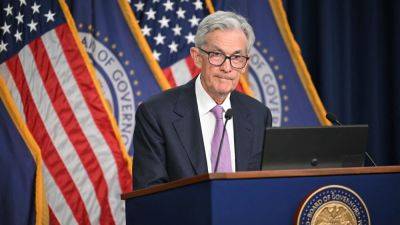The Fed slashed interest rates last week, but Treasury yields are rising. What's going on?
With its larger-than-normal cut last week, the Federal Reserve sent a clear message that interest rates are heading considerably lower in the future.
The Treasury market, though, hasn't been paying attention.
Despite the Fed approving a half percentage point reduction in its baseline short-term borrowing rate, Treasury yields instead have been moving higher, particularly at the long end of the curve.
The 10-year note yield, considered the benchmark for government bond yields, has leaped about 17 basis points since the Federal Open Market Committee meeting of Sept. 17-18 — reversing what had been a sharp decline throughout September. One basis point equals 0.01%.
For now, bond market professionals are writing off a good portion of the move as a simple makeup for markets pricing in too much easing before the Fed meeting. But the trend bears watching, as it could signal something more ominous ahead.
Other reasons cited for the move include the Fed's willingness to tolerate higher inflation, as well as concerns over the precarious U.S. fiscal situation and the potential that an onerous debt and deficit burden could raise long-term borrowing costs no matter what the Fed does.
"To a certain extent, there was just an element of people buying the rumor and selling the fact as it relates to the actual FOMC decision last week," said Jonathan Duensing, head of U.S. fixed income at Amundi US. "The market already had discounted a very aggressive easing cycle."
Indeed, the market had been pricing in larger rate cuts than what Fed officials had indicated at the meeting, even with the 50 basis point move. Officials penciled in another 50 basis points in reductions by the end of the year and another 100 by the end of 2025. By contrast, markets







